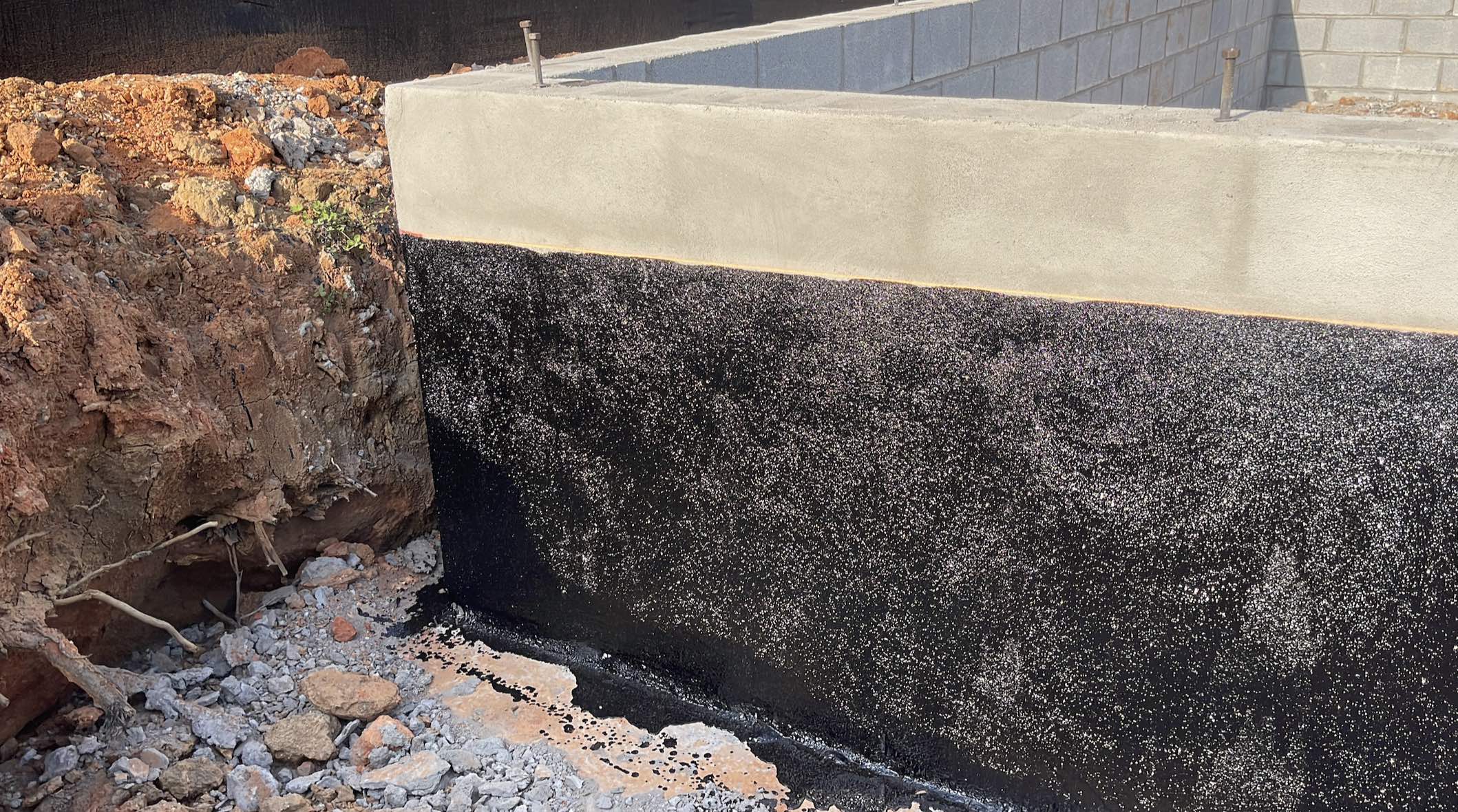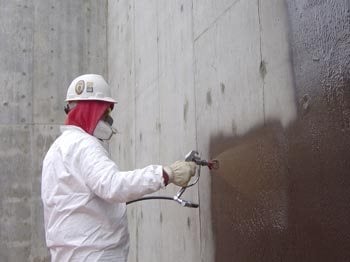Discovering the Various Techniques and Solutions for Effective Damp Proofing
Moisture in buildings presents substantial obstacles to both architectural integrity and indoor air high quality. Numerous strategies and solutions have emerged to battle this prevalent issue. From traditional damp-proof membranes to ingenious chemical therapies, each technique uses unique benefits. Recognizing these options is crucial for effective moisture control. However, selecting the appropriate remedy relies on specific structure problems and demands, motivating additional expedition into the most efficient damp proofing techniques offered.
Recognizing the Sources Of Dampness
Wetness can emerge from numerous resources, comprehending these causes is crucial for efficient remediation. Generally, moisture originates from three key sources: rising wet, permeating damp, and condensation. Rising moist happens when groundwater takes a trip up-wards through permeable materials, such as block or rock, commonly because of an absence of an efficient barrier (mould removal newcastle). Penetrating moist is normally created by outside elements, including roofing leaks, malfunctioning gutters, or damaged wall surfaces, permitting water to infiltrate a building. Condensation, on the other hand, results from excess moisture in the air, frequently aggravated by poor air flow and temperature differences, resulting in water droplets creating on surface areas. Recognizing these underlying issues is crucial, as each type of dampness needs a customized method for removal. Correct assessment assists in determining the most efficient solutions, eventually safeguarding the structural stability of a structure and boosting interior air quality
Typical Damp-Proof Membranes

Chemical Damp-Proofing Solutions
Chemical damp-proofing services offer an ingenious technique to stop moisture invasion in structures. These methods typically entail the application of liquid chemicals that pass through stonework and develop an obstacle versus rising wet. Generally used chemicals include silanes, siloxanes, and various other water-repellent agents that respond with surface area materials to create a hydrophobic layer.The application process typically requires boring holes into the wall surfaces, infusing the chemical option, and enabling it to cure. This approach is specifically helpful for older structures where traditional damp-proof membrane layers might be unwise. Chemical damp-proofing can be less disruptive and much more affordable than substantial remodelling projects.While reliable, these options depend on proper application and ecological problems for peak performance. damp removal newcastle. Regular maintenance and monitoring are necessary to assure the longevity of the damp-proofing treatment. Generally, chemical damp-proofing represents a flexible option for securing buildings against moisture-related damages
Cavity Wall Surface Building And Construction Techniques
Tooth cavity wall surface construction methods offer many benefits, especially in dampness control and power efficiency. By integrating an air void between two layers of stonework, these wall surfaces efficiently reduce water access while boosting insulation. This mix not only safeguards frameworks from wetness but likewise adds to decreased power intake.
Advantages of Cavity Walls
When taking into consideration reliable damp proofing methods, the advantages of cavity walls stick out plainly. Dental caries wall surfaces contain 2 different layers, developing an air gap that effectively reduces moisture penetration. This design reduces the risk of wetness, as the external wall functions as an obstacle versus rain and water ingress. Additionally, dental caries wall surfaces improve thermal insulation, which adds to energy effectiveness by minimizing warm loss. They likewise supply audio insulation, aiding to develop a quieter interior atmosphere. The air space allows for ventilation, which assists in dampness control and minimizes the probability of mold and mildew growth. These benefits not just improve the overall convenience of a structure however likewise add to its longevity and architectural stability.
Dampness Control Strategies
Efficient moisture control approaches are vital in tooth cavity wall surface construction to assure long-lasting protection against wetness. One main approach includes the unification of weep holes, which assist in water drain from the tooth cavity, preventing build-up. Furthermore, using breathable membranes can assist take care of wetness levels while enabling caught vapor to leave. Correct placement of insulation is likewise essential, as it ought to not block water drainage paths. Moreover, making sure that the external leaves of the tooth cavity wall surface are created with water-resistant materials improves total resilience. Regular upkeep checks are important to determine any type of clogs or damages early, guarding the structure's integrity. Ultimately, a combination of these methods forms a robust defense against wetness intrusion in cavity walls.
Insulation and Energy Performance
Insulation plays a vital duty in enhancing energy performance within cavity wall surface building and construction. By incorporating protecting products, these walls produce a thermal barrier that minimizes warmth loss and minimizes energy intake. Effective insulation not only aids preserve a steady interior temperature yet additionally reduces the risk of moisture, as it prevents condensation within the wall tooth cavity. Different strategies, such more info as the usage of stiff foam boards or mineral wool, can be employed to achieve optimal insulation performance. Additionally, correct setup is important to ensure that gaps and gaps are lessened, which can otherwise endanger energy efficiency. Eventually, a well-insulated tooth cavity wall surface contributes greatly to overall sustainability and decreases heating and cooling expenses for home owners.
Outside Damp Proofing Approaches
Outside wet proofing methods are necessary for securing frameworks from wetness seepage. Two reliable techniques consist of the application of water-proof membranes and the installation of French drains pipes. These solutions assist reduce water buildup and preserve the honesty of structures.
Waterproof Membrane Layer Application
While various techniques exist for avoiding dampness ingress, the application of water resistant membranes stays a very effective outside wet proofing technique. These membranes are commonly made from products such as polyethylene, rubber, or customized bitumen, supplying a robust obstacle versus water penetration. The installation process includes using the membrane layer to the external surfaces of wall surfaces or foundations, making certain complete protection to avoid leaks. Proper bond and securing at joints are crucial to making the most of effectiveness. Water resistant membrane layers can be used in various forms, including liquid finishes and sheet membrane layers, enabling flexibility based on the details requirements of the structure. This method not only safeguards structures from moisture yet additionally boosts their longevity and structural integrity.
French Drain Setup
One reliable method for taking care of groundwater and preventing wetness buildup around a structure's foundation is the installment of a French drainpipe. This water drainage system includes a trench filled with crushed rock and a perforated pipeline that reroutes surface area water far from the foundation. Proper installment requires mindful planning, guaranteeing that the drain slopes away from the framework to help with ideal water circulation. Additionally, the place of the drainpipe is essential; it must be positioned in locations susceptible to pooling or excess dampness. Routine maintenance, consisting of cleaning particles from the crushed rock and ensuring the pipeline stays unobstructed, is vital for long-term efficiency. Inevitably, a well-installed French drain can significantly decrease the risk of water-related problems in foundations and cellars.
Inside Waterproofing Methods
Interior waterproofing approaches are important for protecting a building's inside from moisture seepage and potential water damage. These approaches normally entail the application of specialized products and techniques developed to develop a moisture obstacle within the framework. One common technique is the use of water resistant coverings or sealers on walls and floorings, which stop dampness from permeating surfaces.Additionally, installing indoor drainage systems, such as sump pumps, can successfully take care of water accumulation in cellars and creep rooms. An additional method includes the usage of vapor obstacles, which are mounted to inhibit moisture activity from the ground into living spaces.Moreover, resolving any fractures or spaces in wall surfaces or structures with ideal sealers guarantees an extensive defense versus water intrusion. By implementing these indoor waterproofing methods, homeowner can substantially lower the danger of mold growth, architectural damage, and various other moisture-related problems. Appropriate implementation of these methods is necessary for lasting security and building stability.
Routine Maintenance and Examination Practices
Normal upkeep and assessment methods are crucial for ensuring the long-term efficiency of moist proofing options in any kind of structure. Routine checks enable residential or commercial property proprietors to identify early signs of wetness invasion, such as peeling paint, mold and mildew development, and stuffy smells. These indications can signal underlying concerns that require immediate attention.Inspections must be carried out at the very least yearly, concentrating on susceptible areas like basements, crawl rooms, and outside walls. Throughout these analyses, homeowner must examine sealers, drain systems, and ventilation to validate they work correctly.Additionally, maintaining seamless gutters and downspouts is vital, as clogged systems can bring about water build-up near the structure. Carrying out a regular maintenance timetable, together with timely repair work, can significantly extend the lifespan of moist proofing steps and secure the structural stability of the structure. Proactive procedures ultimately add to the general wellness and security of the living setting.
Frequently Asked Inquiries
How Much Time Does Damp Proofing Normally Last?
The period of damp proofing efficiency differs, generally lasting between 20 to half a century. Factors such as application high quality, ecological conditions, and upkeep techniques considerably affect the longevity of the wet proofing treatment.

Can I Damp Evidence My Home Myself?
The private contemplated the usefulness of DIY damp proofing. With correct research study and the appropriate materials, it is feasible. Nevertheless, they also acknowledged the significance of professional assistance to guarantee long-lasting performance and stop future problems.
What Are the Indicators of Ineffective Damp Proofing?
Indicators of ineffective moist proofing include consistent stuffy odors, visible mold and mildew growth, peeling paint, moist patches on wall surfaces, and wood degeneration - mould treatment newcastle. Home owners must address these concerns immediately to stop more damage and wellness issues
Does Damp Proofing Affect Indoor Air Top Quality?

Just How Much Does Professional Damp Proofing Price?
Professional wet proofing costs differ substantially, generally varying from $1,000 to $5,000 depending on the home's dimension, the extent of the wet issue, and picked approaches. Each scenario calls for a customized evaluation for precise pricing. Generally, dampness stems from 3 primary sources: rising wet, passing through wet, and condensation. When thinking about efficient damp proofing techniques, the advantages of tooth cavity wall surfaces stand out prominently. Exterior damp proofing methods are vital for shielding structures from moisture infiltration. While numerous approaches exist for stopping dampness ingress, the application of waterproof membrane layers stays an extremely efficient external damp proofing strategy. Indications of inefficient wet proofing consist of relentless musty odors, noticeable mold growth, peeling paint, damp patches on wall surfaces, and timber degeneration.